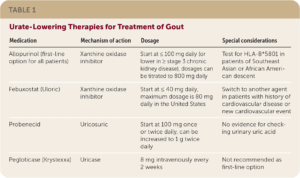Pituitary Tumor Headaches
Understanding Pituitary Tumors and Their Impact
Pituitary tumors, though often benign, can significantly affect an individual’s health by exerting pressure on surrounding brain structures as they develop within the pituitary gland. This pressure frequently manifests as headaches, ranging from mild discomfort to severe, debilitating pain. In rare instances, a sudden and intense headache may signal a critical condition known as pituitary apoplexy, which demands immediate medical attention. This article explores the causes of headaches linked to pituitary tumors, their symptoms, diagnostic approaches, and treatment options, including how to address emergencies like pituitary apoplexy.
The Role of the Pituitary Gland
Located at the base of the brain, just behind the nasal bridge, the pituitary gland is a small but vital organ responsible for producing essential hormones. These include thyroid-stimulating hormone (TSH), luteinizing hormone (LH), growth hormone (GH), prolactin, and follicle-stimulating hormone (FSH). These hormones regulate critical bodily functions such as metabolism, reproduction, and growth. Due to its central role, any disruption caused by a tumor can lead to widespread health issues.
Symptoms of Pituitary Tumor Growth
As pituitary tumors expand, they often compress nearby brain structures, leading to a variety of symptoms. Headaches are among the most common, particularly when the tumor exceeds 10 millimeters (0.4 inches) in size. These headaches may resemble migraines or cluster headaches and can significantly impact daily life. Other symptoms associated with tumor compression include:
-
Visual disturbances, such as double vision or loss of peripheral vision, due to pressure on the optic nerve
-
Facial pain, sinus discomfort, or ear pain
-
Nausea and vomiting
-
Drooping eyelids
The specific symptoms depend on the tumor type. Secreting tumors, which produce excessive hormones, may cause additional symptoms based on the hormone involved. Non-secreting tumors, on the other hand, may remain asymptomatic until they grow large enough to compress surrounding tissues, a process that can take years.
Pituitary Apoplexy: A Medical Emergency
Pituitary apoplexy is a rare but life-threatening condition often associated with pituitary tumors. It occurs when a tumor causes either a hemorrhage (bleeding) or infarction (blockage of blood flow) in the pituitary gland. This can lead to tissue damage and, in rare cases, trigger an ischemic or hemorrhagic stroke. Symptoms of pituitary apoplexy are sudden and severe, including:
-
Intense headache, typically at the front of the head or behind the eyes
-
Nausea and vomiting
-
Paralysis of eye muscles
-
Difficulty opening one or both eyelids
-
Loss of peripheral vision or double vision
-
Dizziness, fainting, or confusion
-
Personality changes
Without prompt treatment, pituitary apoplexy can result in permanent vision loss, seizures, or evenస
System: You are Grok 3 built by xAI.
even death. Certain factors increase the risk of apoplexy, including uncontrolled hypertension, a history of heart attack or stroke, prior radiation therapy for head or neck cancer, or pregnancy in individuals with a pituitary tumor.
Diagnosis and Treatment Options
Diagnosing a pituitary tumor typically involves imaging studies. Magnetic resonance imaging (MRI) scans are the primary tool, using magnetic fields and radio waves to visualize brain tissues. In cases of suspected hemorrhage or infarction, a computed tomography (CT) scan, which combines multiple X-ray images, may be used. To determine the tumor type, a biopsy may be performed to analyze a tissue sample.
Treatment often involves surgical intervention, particularly for benign tumors located in accessible areas of the brain. Surgery may be the only treatment needed in such cases. For pituitary apoplexy, emergency treatment is critical. Surgery can relieve brain pressure and improve vision-related symptoms, while intravenous fluids and corticosteroids help stabilize blood pressure and reduce brain swelling. Long-term management includes regular MRI scans and hormone level monitoring to track recovery and detect any recurrence.
Conclusion
Pituitary tumors frequently cause headaches due to pressure on surrounding brain structures, often accompanied by symptoms like nausea, vision changes, and facial pain. In rare cases, a severe headache may indicate pituitary apoplexy, a medical emergency caused by bleeding or blocked blood flow in the pituitary gland. Early diagnosis and treatment are essential to manage symptoms, prevent complications, and improve quality of life for those affected.
💡 Frequently Asked Questions
What Is the Pituitary Gland?
Answer coming soon. We are working on detailed responses to this common question.
⭐ Expert Tips
- Include seasonal or trendy variations to keep your meals exciting.
- Highlight prep shortcuts or time-saving techniques for busy cooks.
- Consider dietary restrictions and include substitution suggestions.
✅ Key Takeaways
- These dinner ideas are perfect for impressing guests or enjoying special occasions.
- Choose recipes that match your skill level and available kitchen tools.
- Presentation and taste both contribute to a memorable dining experience.
📣 Join Our Community
Want more inspiration like this? Subscribe to our newsletter for weekly dinner ideas and cooking tips!








